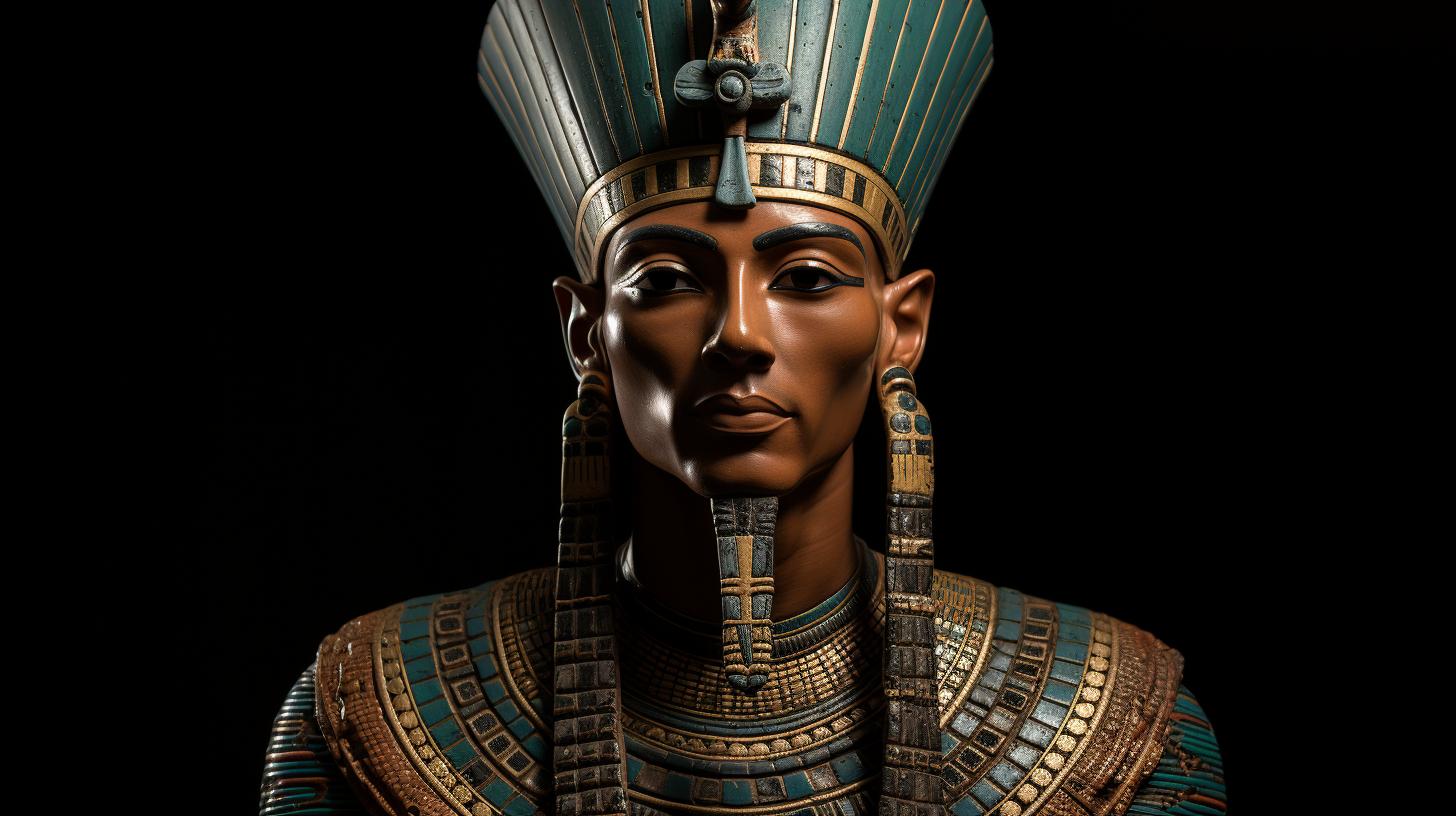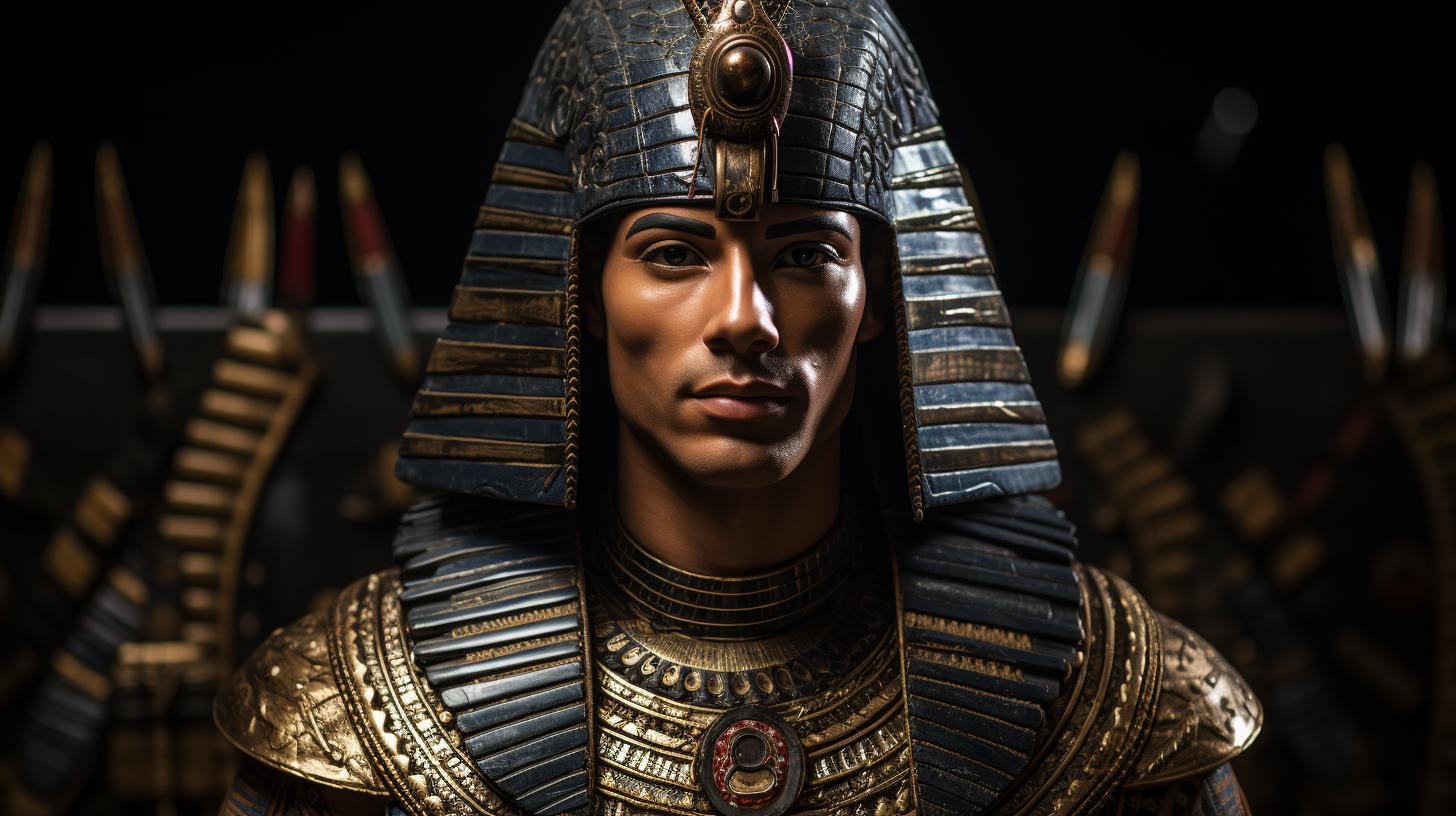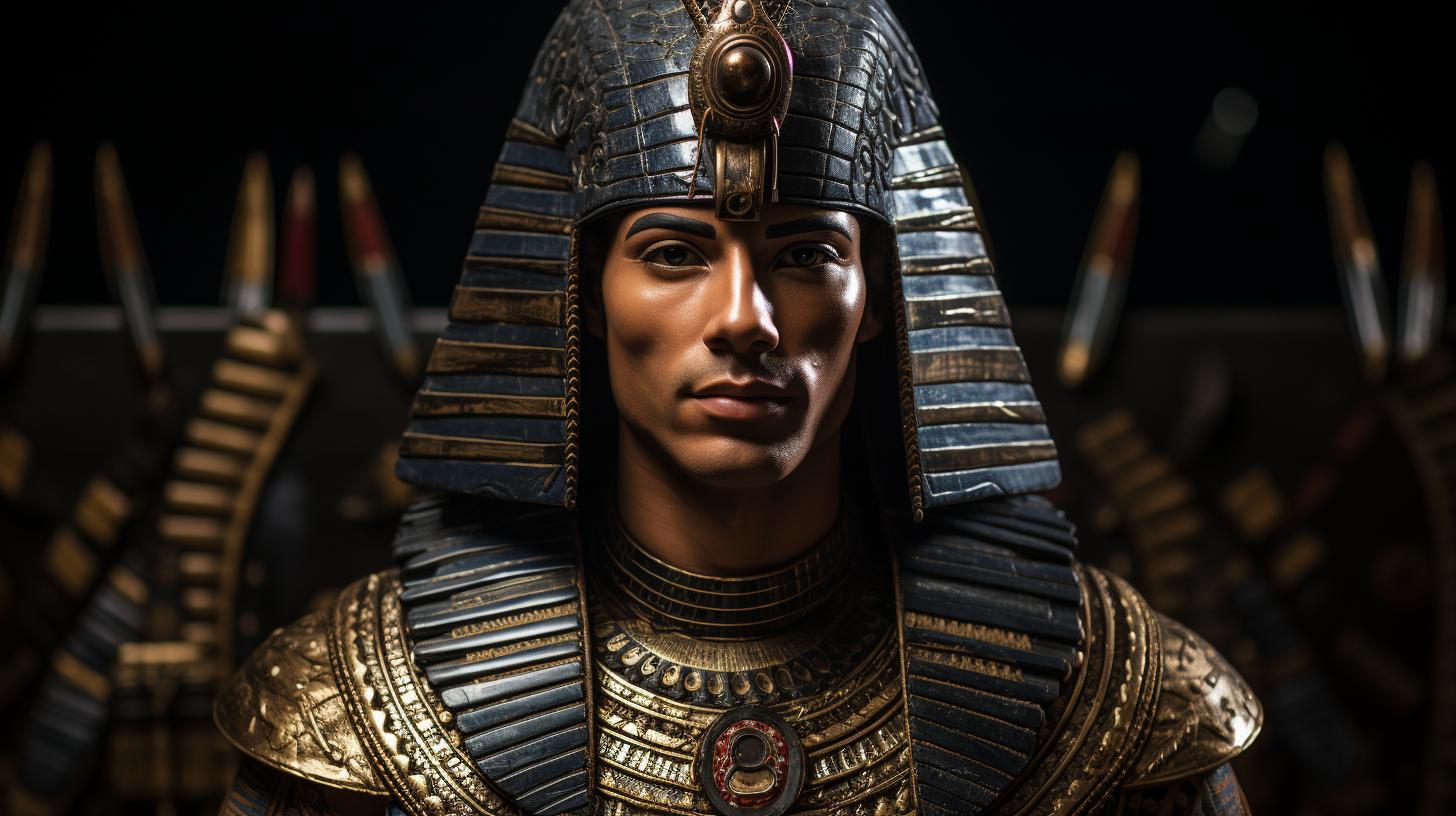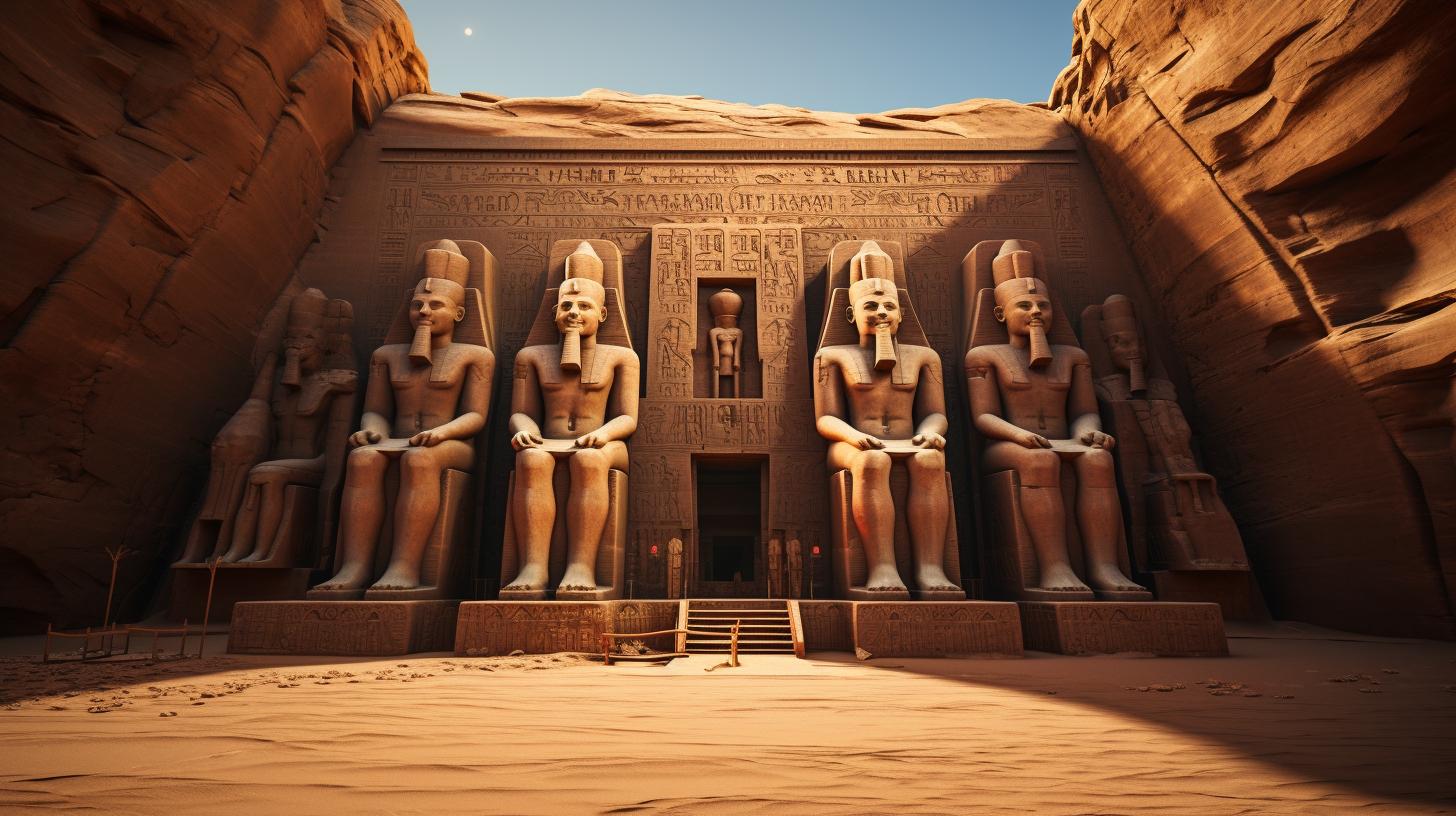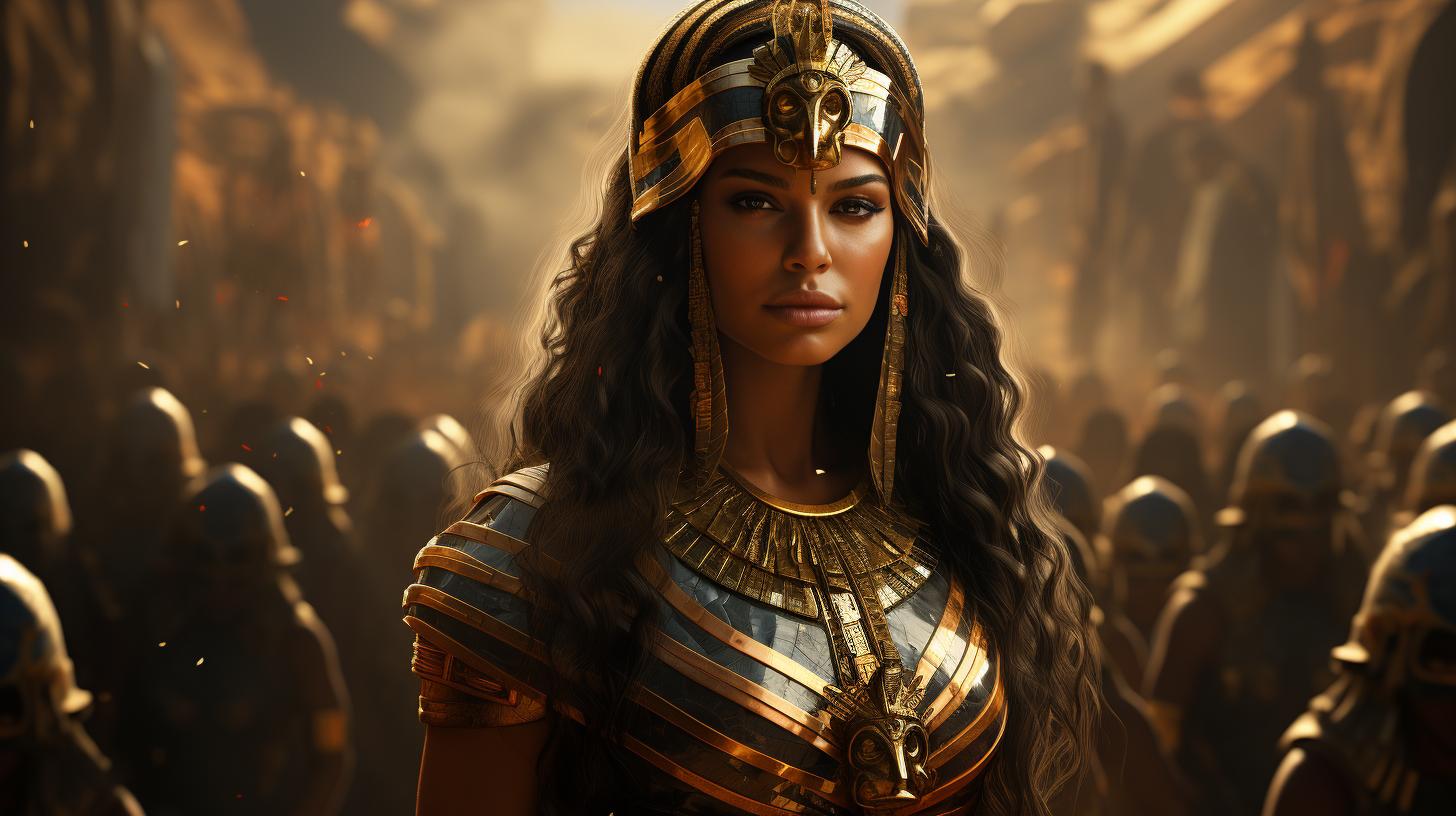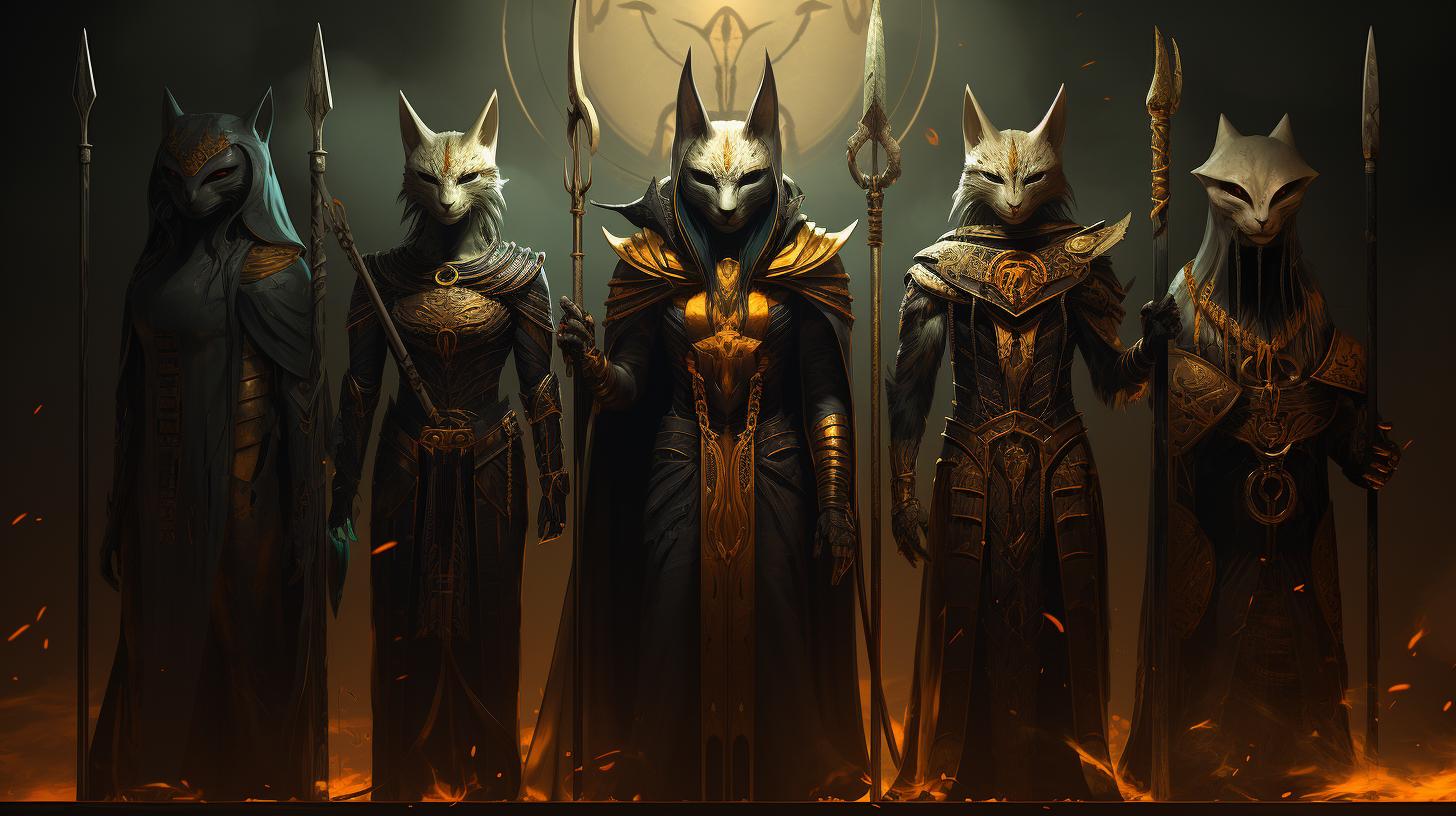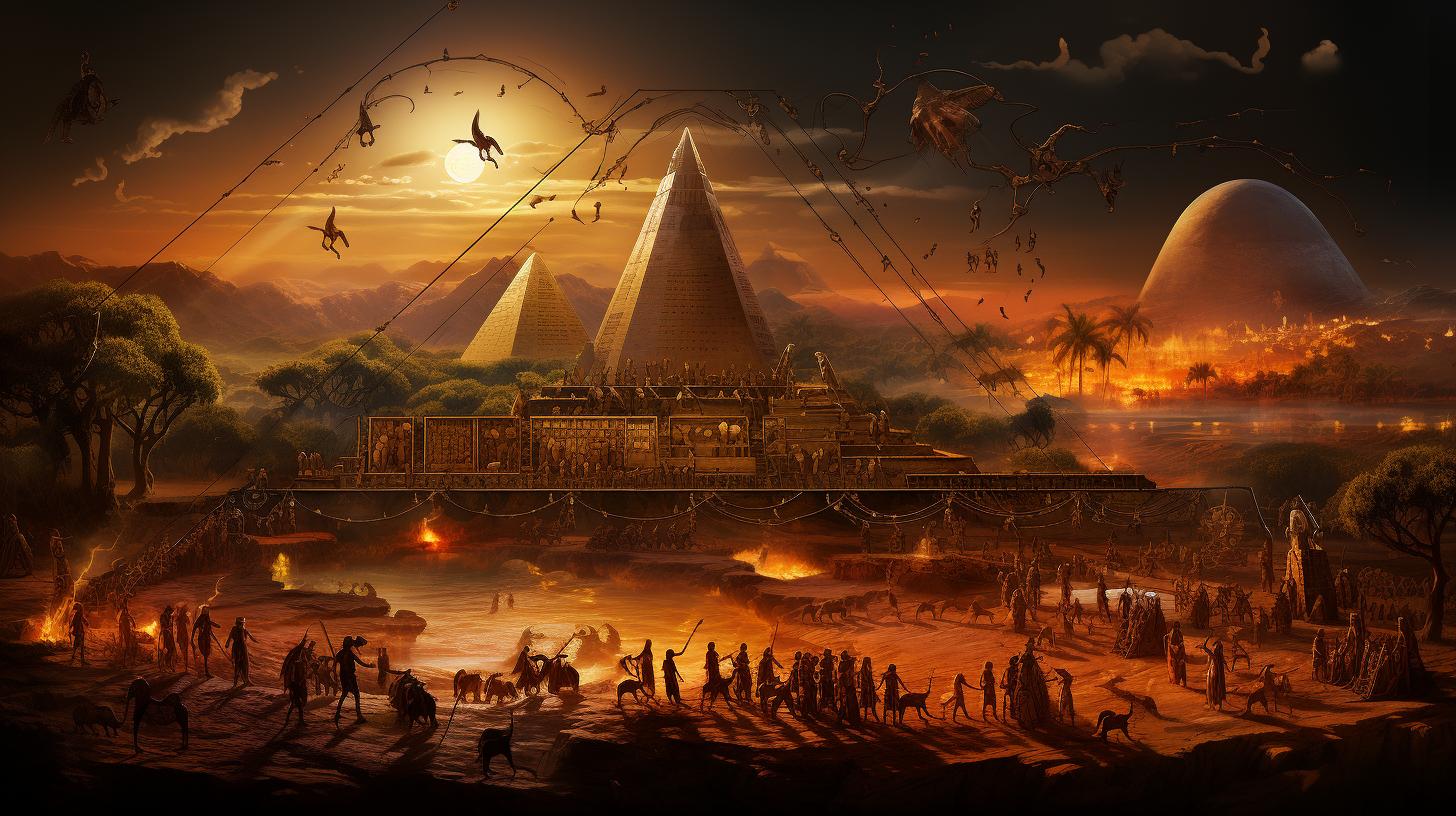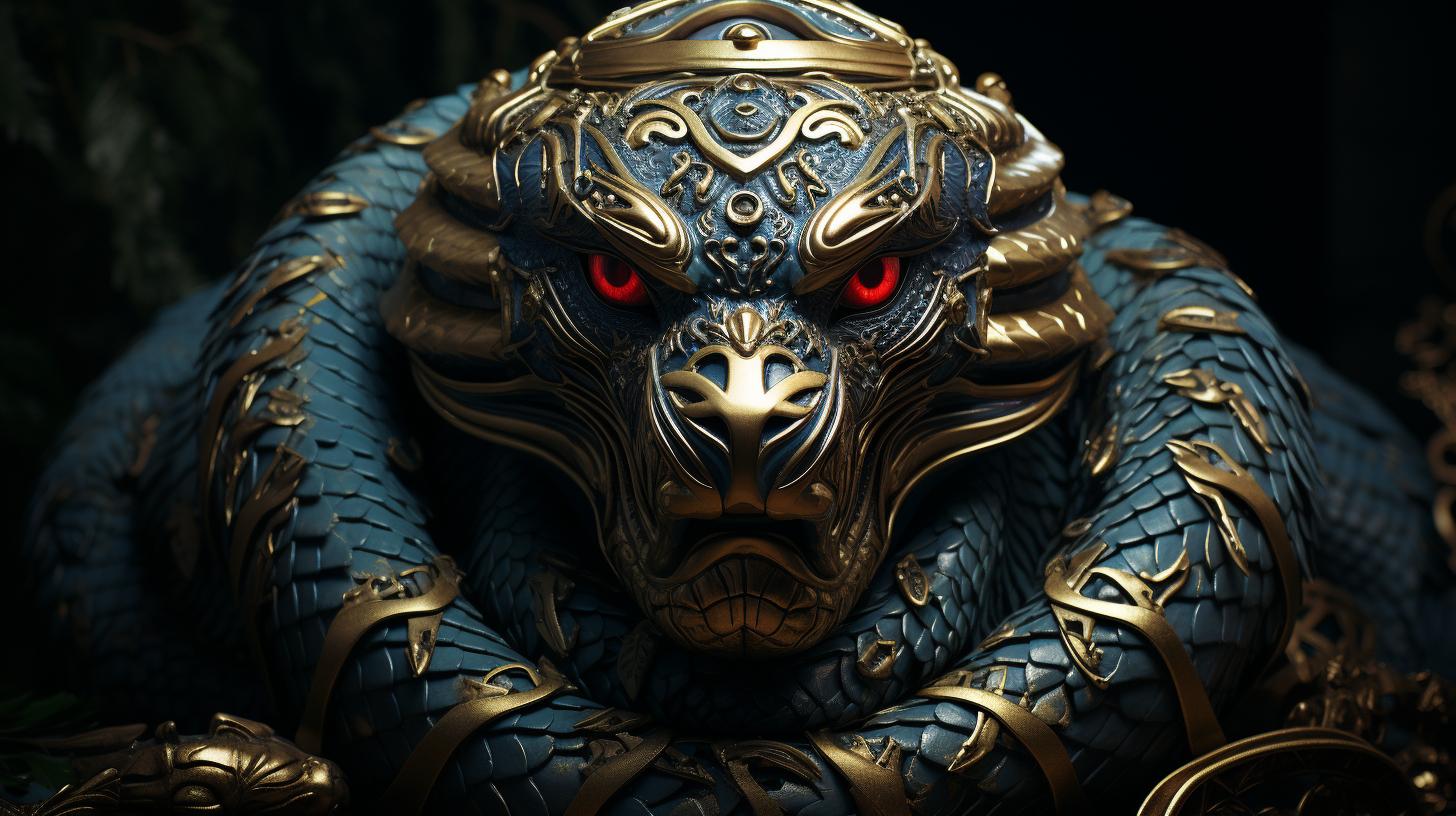Egyptian Pharaoh Mentuhotep II: Unifying Ancient Egypt and Building a Legacy
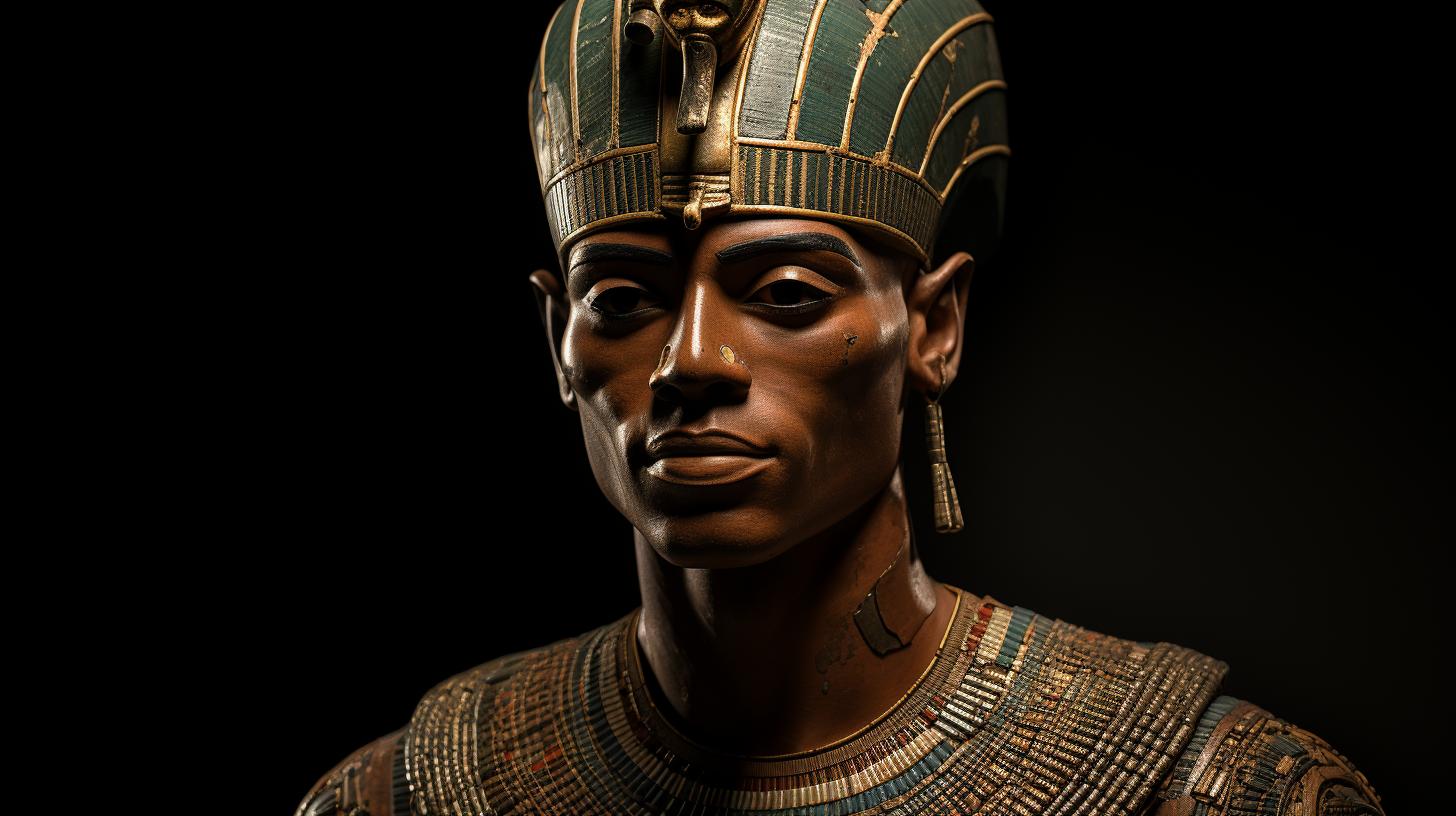
The article explores the life and achievements of Egyptian Pharaoh Mentuhotep II, the unifier of ancient Egypt. It delves into his rise to power in Thebes amidst a divided political landscape and his military conquests, including Heracleopolis and Nubia.
Mentuhotep II’s reign brought centralized government and architectural innovations, highlighted by the majestic Deir el-Bahari temple. His diplomatic relations and contributions to art and culture are also discussed. The pharaoh’s long-lasting reign ushered in peace and prosperity, leaving a lasting impact on Egyptian history.
Additionally, the article briefly examines theories surrounding his health, including a possible diagnosis of Elephantiasis.
Early Life and Rise to Power
The early life of Mentuhotep II, an Egyptian pharaoh, played a significant role in shaping his future as the ruler of ancient Egypt. Understanding his background and family connections provides insight into his journey to the throne.
Mentuhotep II’s Background and Family
Mentuhotep II hailed from a prominent lineage within the Theban region of Egypt. He was born into a family that held influence and power, which likely contributed to his political aspirations.
Although specific details about his family are scarce, it is believed that his father was named Intef III, a prominent local ruler.
Political Landscape of Ancient Egypt
During Mentuhotep II’s early years, Egypt was in a state of disunity, referred to as the First Intermediate Period. Rivalry between the ruling dynasties of the Tenth and Eleventh Dynasties intensified, with the Tenth Dynasty holding dominance in the Lower Egypt, while the Eleventh Dynasty controlled the Upper Egypt.
Ascension to the Throne in Thebes
Mentuhotep II’s path to power began in Thebes, the capital of the Eleventh Dynasty. Seizing the opportunity amidst the fragmented political landscape, he ascended to the throne, determined to reunify Egypt under his rule.
With his strategic vision and determination, Mentuhotep II embarked on a transformative journey that would shape the destiny of ancient Egypt and establish his legacy as a revered ruler.
Unification of Egypt
After a period of political turmoil known as the First Intermediate Period, Mentuhotep II emerged as a powerful figure, determined to reunify Egypt and bring stability to the land.
His reign marked a pivotal turning point in Egyptian history.
Challenges During the First Intermediate Period
During the First Intermediate Period, Egypt was divided, with the X Dynasty ruling in Lower Egypt and the XI Dynasty ruling in Upper Egypt. This division led to rivalries, conflicts, and a fragmented governance system.
Military Campaigns and Conquests
To secure his power and unify the country, Mentuhotep II deployed his armies northward. He successfully conquered Heracleopolis, a significant stronghold, in 1968 B.C. These military campaigns showcased his strategic prowess and determination to bring the entire land under his control.
Conquest of Heracleopolis
Mentuhotep II’s conquest of Heracleopolis played a crucial role in solidifying his authority. By defeating the rulers of this city, he displayed his military might and suppressed any resistance to his rule.
Campaigns in Nubia and Abu Simbel
Not content with solely unifying Upper and Lower Egypt, Mentuhotep II expanded his dominion southward into Nubia. Through a series of campaigns, he established Egyptian control in the region, culminating in the establishment of a local Egyptian kingdom in Abu Simbel.
These conquests further symbolized his power and authority over foreign lands.
Consolidation of Power and Unification
In his quest for a centralized government, Mentuhotep II focused on Thebes, stripping the nomarchs of their regional power. He introduced new governmental positions held by loyal officials from Thebes, granting him greater control over the entire nation.
Centralizing Government in Thebes
Mentuhotep II’s centralization efforts centered around Thebes. By bringing power and control under his direct authority, he aimed to establish a strong and unified administration.
Reforms and Control Over Regional Leaders
Under Mentuhotep II’s reign, officials from the Egyptian capital frequently traveled to various regions to monitor and oversee the activities of regional leaders.
This increased control over local leaders further diminished their autonomy and solidified the pharaoh’s authority.
Mentuhotep II’s Reign and Achievements
During his reign, Mentuhotep II accomplished significant achievements that shaped the history of ancient Egypt. His diplomacy and foreign relations, building projects and architectural innovations, as well as his contributions to art and culture, solidified his legacy as one of Egypt’s great pharaohs.
Diplomacy and Foreign Relations
Mentuhotep II recognized the importance of maintaining diplomatic relations with neighboring regions. Through peaceful negotiations and alliances, he secured stability and prosperity for Egypt. His diplomatic efforts fostered trade and cultural exchange, strengthening the kingdom’s position in the ancient world.
Building Projects and Architectural Innovations
Mentuhotep II embarked on ambitious building projects, leaving behind awe-inspiring structures that showcased his architectural innovations. The crowning achievement was the construction of his magnificent mortuary temple at Deir el-Bahari. This complex, with its grand terraces and covered corridors, became an architectural inspiration for future temples.
Contributions to Art and Culture
Mentuhotep II’s reign saw significant advancements in art and culture. The pharaoh’s patronage of the arts led to the creation of exquisite paintings and reliefs that depicted his rule and celebrated the goddess Hathor. Many of these artistic masterpieces are now housed in prestigious collections, including the Metropolitan Museum of Art in New York.
Legacy and Succession
Pharaoh Mentuhotep II’s reign left a lasting impact on ancient Egyptian history, particularly in terms of peace, prosperity, and the succession of power. His accomplishments during his rule laid a strong foundation for the future of Egypt.
Peace and Prosperity Under Mentuhotep II
Mentuhotep II’s successful unification of Egypt brought stability to the region. His efforts to centralize the government in Thebes and his reforms strengthened his rule, providing a sense of security and order throughout the kingdom.
This era of peace and prosperity allowed for growth and development across various sectors of Egyptian society.
Impact on Ancient Egyptian History
The reign of Mentuhotep II marked a significant turning point in Egyptian history. His ability to unify the country after a tumultuous period of division brought about a new era known as the Middle Kingdom.
This period saw advancements in art, architecture, and international relations, laying the groundwork for future pharaohs and shaping the course of Egyptian civilization.
Succession and Mentuhotep III
At the end of Mentuhotep II’s reign, his son, Sankhkare Mentuhotep III, inherited a reunified and prosperous kingdom. Mentuhotep III continued the legacy of his father, building upon the foundations laid during his reign.
The peaceful transition of power ensured the stability of Egypt and allowed for the flourishing of arts, culture, and trade in subsequent years.
Mentuhotep II’s Health
Pharaoh Mentuhotep II’s health has been a subject of speculation and study. Various theories have emerged regarding his medical condition, shedding light on the challenges he may have faced during his reign.
Theories on Mentuhotep II’s Medical Condition
Researchers have put forth several hypotheses regarding the health issues that Mentuhotep II might have experienced. Though it is difficult to reach a definitive conclusion, these theories provide valuable insights into the pharaoh’s well-being.
Possible Diagnosis: Elephantiasis
One possible affliction affecting Mentuhotep II is believed to be Elephantiasis, a condition characterized by the swelling and enlargement of body parts, particularly the legs. Ancient depictions of the pharaoh suggest the presence of this condition, offering a potential explanation for his swollen legs.
While the exact cause of his health condition remains uncertain, researchers continue to analyze historical evidence and utilize modern medical knowledge to gain further understanding of Mentuhotep II’s health challenges.
.

